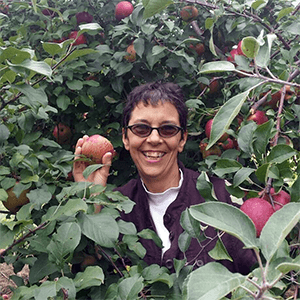How SEED Starts with the Personal to Create Change in Schools
 A guest post by SEED Leader Ann Hite, a Student Support Coach (supporting students and staff using preventive and Restorative strategies) at Roseville Area Middle School in Minnesota.
A guest post by SEED Leader Ann Hite, a Student Support Coach (supporting students and staff using preventive and Restorative strategies) at Roseville Area Middle School in Minnesota.
Teachers are under a lot of scrutiny these days. I have found that one of the ways we defend ourselves against this critique is by pointing to social disparities over which we have no control (poverty, housing, health care, etc.) and the negative impact those things have on achievement. So, as a white teacher, when I talk about equity with colleagues, I work to stay focused on what teachers can do to make a difference for our students of color.
As it turns out, the difference we can make is very personal, a lesson I have learned over and over again in SEED. The difference between SEED and other professional development is in the invitation for teachers to be vulnerable enough to share their own stories of encountering difference in their lives. Activities such as Serial Testimony (a method of timed, turn-by-turn, conversational go-around) are helpful in creating vulnerability and empathy. This kind of heart work has a strong potential to make a direct and positive impact on teachers’ relationships with students and families who are different than they are.
As part of a collaborative action research project several years ago, I experienced a paradigm shift when my cohort challenged ourselves to look in the mirror with an equity lens and to study the impact of our own teaching behaviors on student achievement. We spent a year observing each other and reflecting on the cultural origins of our behaviors with students. We searched the most current education research for studies on teacher equity mindset, and we created a project centered on common teacher behaviors such as responding to students with acknowledgment and feedback; wait time (time between a teacher asking a question and giving a student the answer) and physical closeness; expressing disapproval for misbehaviors; listening; asking probing and higher order questions; and providing analytical feedback.* My participation in SEED circles prepared me to engage with my colleagues in dialogue that was authentic enough to allow us to challenge each other without intimidation or shame.
Regular discussion about the data collected during the observations was part of our project. These conversations highlighted the importance of teachers being self-aware and using that knowledge in the moment to disrupt negative assumptions about students of color. For example, in a well-intentioned effort to “help” students of color by shortening my wait time after posing a question, I realized I was giving them the message that I did not believe in their capacity. Then, I had to face the question of whether or not I actually did believe in them! Many times I found that I did, but in the moment I was defaulting to negative cultural influences. This knowledge helped me correct the gap between my beliefs and my teaching behaviors.
Other times, I had to admit to myself that I did not believe in a particular student and needed to reframe my personal, cultural expectations about the way engagement and intelligence look. That is when things got messy and personal and when it really helped to lean into all the lessons I have learned from my SEED circles! The SEED experience pulls teachers out of the isolation of their classrooms and into the kind of discourse that can move us through the fear of sharing our mistakes and toward sustainable transformation.
* This list comes from Generating Expectations for Student Achievement. The program is published by GrayMill.
**Published at National Seed Project

